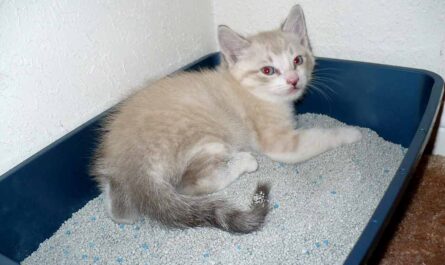How to tell if your cat can’t hear and how to help them? The rustle of my treat bag usually sent Luna scrambling, a furry blur of anticipation. But that evening, she remained oblivious, nestled peacefully on the windowsill. I called her name, my voice laced with concern, but she didn’t even twitch an ear. A prickle of unease settled in my gut. Could my once-vigilant feline companion be…deaf?
It turned out, she was. And as I embarked on the journey of understanding her silent world, I realized how easily feline deafness can go unnoticed. Unlike the dramatic barking absence in dogs, a cat’s hearing loss often unfolds subtly, its impact hidden in seemingly minor behavioral changes.
But deafness, affecting both kittens born with it (congenital) and older cats experiencing hearing loss (acquired), is more common than you might think. While certain breeds like white cats with blue eyes or Siamese are predisposed, any cat can be affected by age-related changes, inner ear infections, or other medical conditions.
The impact on their lives can be significant. Imagine navigating a world shrouded in silence, where playful squeaks go unheard and warning hisses fall flat. Their sense of space and ability to communicate are altered, leaving them vulnerable and potentially withdrawn.
Subtle signs of a deaf cat
Cats are experts at nonverbal cues; they can convey themselves with a variety of subtle meows, body language, and even ear flicks. But what happens if one of their primary senses, hearing, begins to fail them? Cats are excellent adapters by nature, but if their deafness is overlooked, it can cause problems. Fortunately, you can make sure your pet survives and thrives in a silent world by being aware of the warning signs and making the necessary adaptations.
It’s crucial, then, to be attuned to the subtle signs:
- Unresponsiveness to familiar sounds: Your voice, the clinking of food bowls, the rattle of toys – if their ears stay perked but no reaction follows, it’s worth investigating.
- Startled responses: A sudden touch or movement might elicit exaggerated surprise, as they weren’t alerted by sound beforehand.
- Increased sleep or vocalizations: Disoriented by their altered perception, they might sleep more or meow excessively, trying to compensate for the lack of auditory cues.
- Changes in play behavior: Their usual playful pounces and interactive games might seem less enthusiastic, as they miss the sound cues that normally trigger their engagement.
If you suspect deafness, a visit to your veterinarian is essential for confirmation and potential treatment of underlying causes. But even with permanent hearing loss, a fulfilling life awaits your feline friend. In the next section, we’ll explore ways to enrich their world, foster communication, and create a loving, supportive environment where silence doesn’t stand in the way of joy.
Keep in mind that even if you can’t hear a deaf cat purr, you can still feel their love and connection intensely. We should be receptive to their special needs and offer our hearts and homes to them so that their silent symphony will continue to beautifully enrich our lives.
Listening with Your Eyes: Recognizing the Signs of Deafness
Understanding feline behavior is key to identifying potential hearing loss. Here are some clues to watch for:
- Behavioral changes: Increased sleepiness, lack of response to your calls or familiar sounds like kibble crunching or the can opener, and startled reactions to movement can all indicate deafness. Changes in vocalization, like excessive meowing or a muted purr, are also potential signs.
- Environmental clues: Pay attention to your cat’s interaction with their surroundings. Do they seem confused by the water fountain or doorbell? Are they less interested in noisy toys? Clinginess or aloofness can also be signs of hearing loss, as they might struggle to understand their environment.
- The “cotton ball test”: This simple, non-invasive test can offer a preliminary check. While your cat is facing away, gently drop a cotton ball from behind their head. A normally-hearing cat will likely turn towards the sound. However, remember, this is not a definitive diagnosis.
Always consult your veterinarian for a proper evaluation and confirmation of deafness.
A World Rediscovered: Adapting Life with a Deaf Cat
While the loss of hearing might seem like a significant hurdle, your deaf cat can still enjoy a happy and fulfilling life with just a few adjustments. Here’s how to create a supportive environment:
- Environmental adjustments: Visual cues are key. Use bright toys, and light signals for attention, and leave windows open for natural sounds and visual stimulation. Scent markers like catnip or familiar blankets can also guide them.
- Communication strategies: Trade spoken commands for hand signals, gentle taps, or visual cues like laser pointers. Reward desired behaviors with treats and praise to reinforce positive communication.
- Safety considerations: Deaf cats are more vulnerable to traffic and predators. Keep them safely indoors or on a leash during outdoor walks. Consider using brightly colored collars and bells for increased visibility.
- Routine is key: Predictability brings comfort. Establish a consistent routine for feeding, playtime, and litter box use to minimize confusion and anxiety.
Recall that your best allies are understanding and patience. You may establish a strong relationship and guarantee your deaf cat has a happy, fulfilling life by modifying your communication style and providing a safe, stimulating environment. This will demonstrate that love and connection transcend the constraints of sound.

10 Ways To Help A Deaf Cat
While the familiar meow or the playful chirp might be music to your ears, some feline friends experience the world in a silent symphony. Understanding deafness in cats is crucial for building a strong bond and ensuring their well-being. But how do you recognize the signs and navigate this unique journey?
Accept the ride, appreciate their uniqueness, and experience the delight of bonding with your feline friend in a whole new way. Recall that love and understanding have the power to heal any silent rift and bring about the ideal harmony in your common universe.
Other Interesting Articles
- How to Stop A Cat from Spraying after Neutering: 11 Tips
- How to Tell if A Cat is in Pain from Arthritis: How to Help
- 14 Reasons Why Is My Cat Making Weird Purring Noises
- How to Take Care of A Kitten without A Mother: 21 Tips
- What Is Caterwauling? 10 Most Common Reasons Cats Do It
- How to Introduce A Cat To A New Home When Moving?
- Cat Declawing: Tips, FAQs, Health, Alternatives, Pros, Cons
- New Cat? 20 Common Warning Signs When Introducing Cats
- 23 Sure Signs Your Cat May Be in Pain and How to Help It
- How to Stop A Neutered Cat From Spraying: 15 Simple Tips
- 12 Signs Your Cat May Require a Feline Companion
- Feline Pheromones: 12 Ways Calming Cat Pheromones Work
- Do Cats Feel Lonely without Other Cats? 6 Signs of Loneliness
- 10 Reasons Why Cats Hiss: How To Stop The Behavior
- Cat Feeding: Tips, Guide, FAQs, Chart for Kittens to Veterans
- Cat Vaccinations: Schedule, FAQs, Side Effects, and Costs
- 44 Strange, Weird, and Random Cat Behaviors Explained
- 21 Pro Tips for Fostering Kittens: Essential Care Guide
- 18 Cat Sounds Your Feline Makes: What They Mean
- Sexing Kittens: How to Tell, Determine the Sex of Your Kitten



